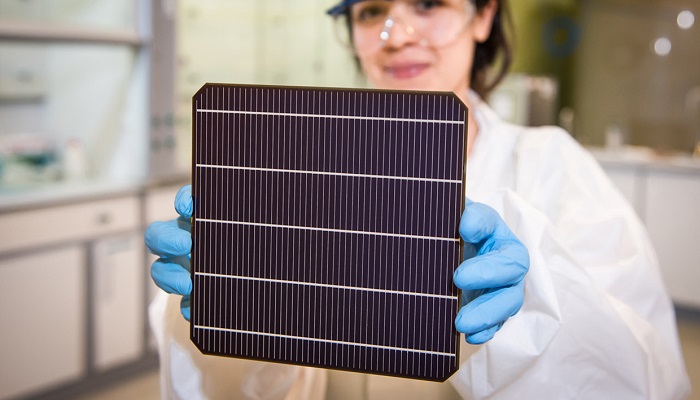Researchers from the National Renewable Energy Laboratory (NREL) reported in the journal Science that a novel method for producing perovskite solar cells solved prior issues and delivered devices with high efficiency and outstanding stability.
The construction of very stable and effective perovskites based on a rich bromine and iodine mixture is thought to be essential for the development of tandem solar cells. However, the researchers found that when the two elements are subjected to heat and light, they frequently split. A solar cell’s voltage and stability are constrained by this.
According to Kai Zhu, senior scientist at NREL, project principal investigator, and lead author of the new study on compositional texture engineering for extremely stable wide-bandgap perovskite solar cells, the novel growth method can substantially minimise phase segregation. There were additional researchers at the University of Toledo.
With the new method, the issue was solved, and a wide-bandgap solar cell was created with an efficiency of more than 20%, 1.33 volts of photovoltage, and little variation in efficiency during 1,100 hours of nonstop use at a high temperature. This method resulted in a 27.1% efficiency for an all-perovskite tandem cell with a high photovoltage of 2.2 volts and better operating steadiness.
The narrow-bandgap layer is placed on top of the wide-bandgap layer in the tandem cell. More of the sun spectrum can be caught and turned into electricity thanks to the difference in bandgaps.
Unstable conditions
A crystalline structure created by the chemical deposition of substances onto a substrate is referred to as perovskite. A high bromine content speeds up the perovskite film’s crystallisation and frequently results in flaws that lower the efficiency of a solar cell. Despite numerous attempts at mitigation, wide-bandgap perovskite solar cells’ stability is still viewed as insufficient.
The newly created method expands on research Zhu and his co-workers released earlier this year that turned the conventional perovskite cell on its side. The researchers were able to boost efficiency and stability as well as simply combine tandem solar cells by using this inverted architectural form.
The NREL-led team continued to deviate from the traditional perovskite fabrication process while using the same design. The conventional technique produces a homogenous perovskite film by adding an antisolvent to the crystallising agents. The novel method utilised gas quenching, in which compounds were exposed to a flow of nitrogen. The outcome improved the structural and optoelectronic properties of the perovskite film and addressed the issue of bromine and iodine separating.
The perovskite film’s perovskite crystals develop quickly and uniformly thanks to the antisolvent method, crowding one another and causing flaws where the grain boundaries converge. When used on high-bromine-content perovskite compounds, the gas-quenching technique drives the crystals to grow together and be closely packed from top to bottom, resembling a single grain and greatly reducing the number of flaws. With more bromine near the top of the cell and less throughout the majority of it, the top-down development technique creates a gradient structure. Additionally, statistically speaking, the gas-quench methodology was more repeatable than the antisolvent strategy.
Outcomes
The researchers attained performance and reliability with less than 5% deterioration over 1,100 hours and an efficiency for the wide-bandgap covering that topped 20%. In combination with the bottom cell, the system achieved a 27.1% efficiency level.
Similar findings were obtained when the drying gas was changed to argon or air by the researchers. This suggests that the gas-quench technique is a generic means of enhancing the performance of wide-bandgap perovskite solar cells. The new growth strategy showed the possibility of high-performance silicon-free all-perovskite tandem devices and promoted the creation of alternative tandem perovskite structures.
The study was supported by the Solar Energy Technologies Office of the US Department of Energy.








